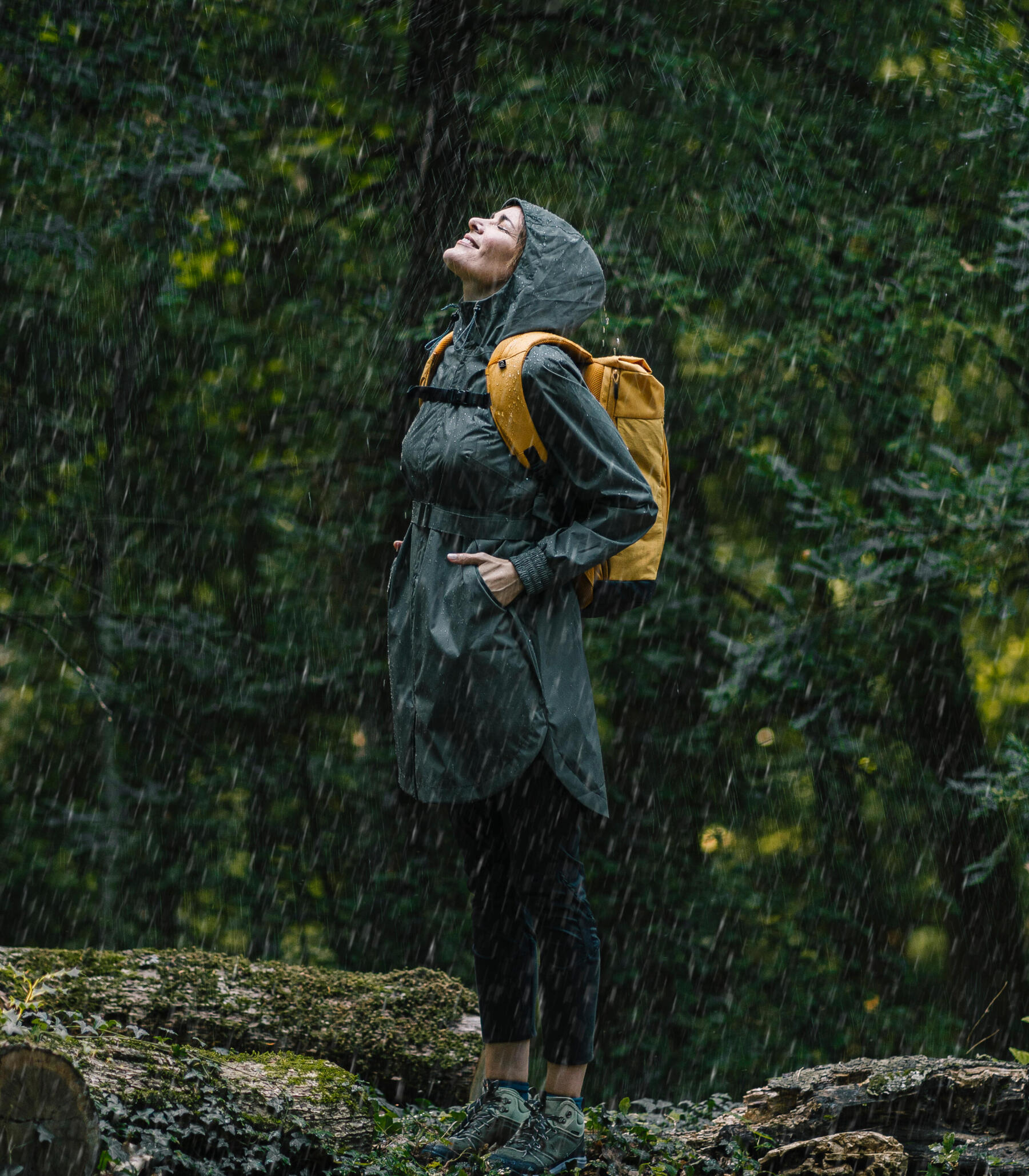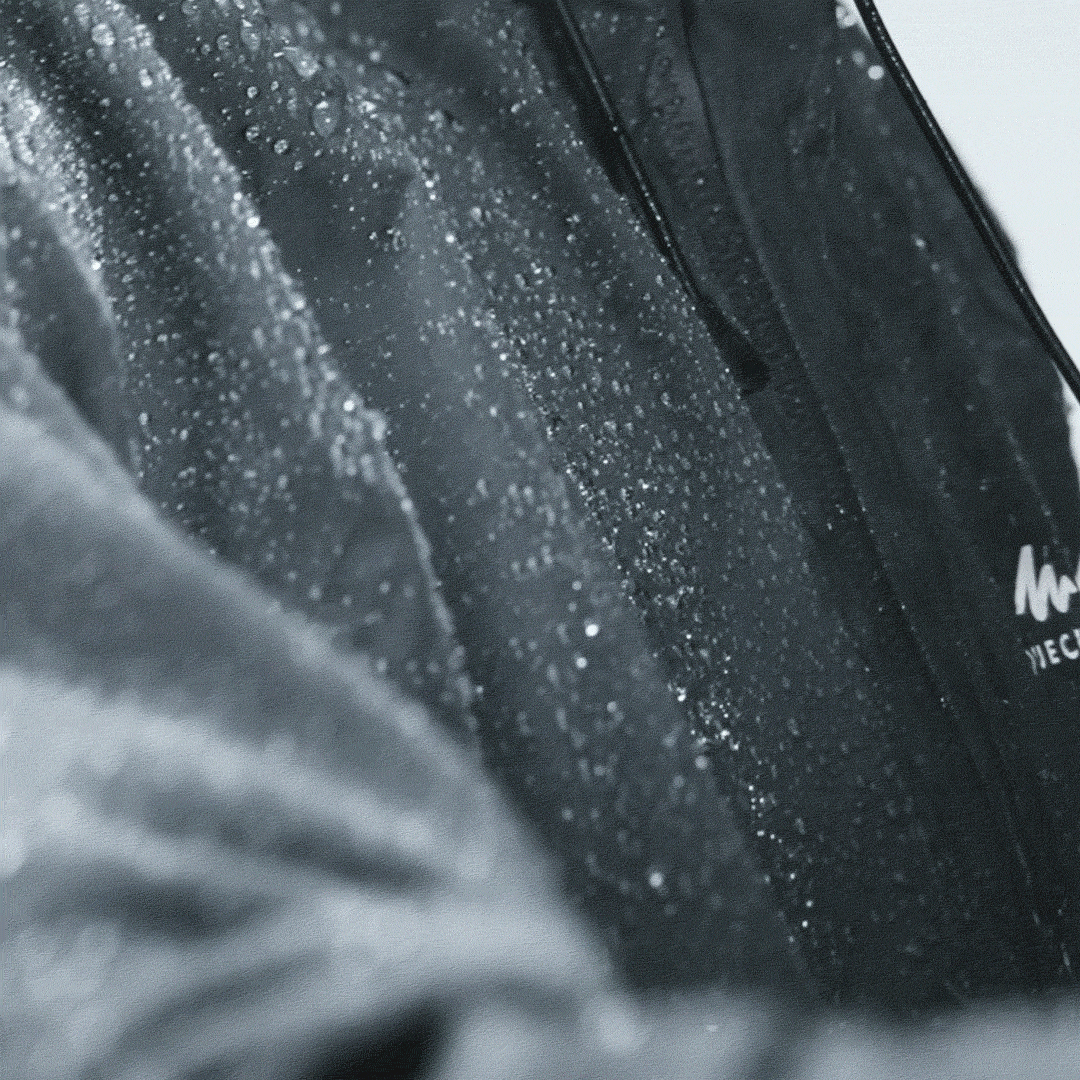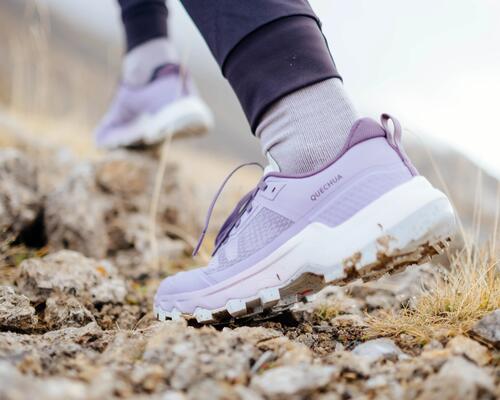Waterproofing and water-repellent properties: what's the difference for your hiking jacket?
You see a "water-repellent" jacket that catches your eye and, what's more, it's less expensive than its "waterproof" counterpart. But these two options don't offer the same technical advantages! So what is a waterproof fabric and why shouldn't it be confused with a water-repellent fabric? Let's look at the difference right away, in order to avoid getting in a muddle!
A fabric's water-repellent property is simply the ability of a material to let water slide off its surface without absorbing it. In practical terms, you'll see drops of water "rolling off" the surface. But it only works if it doesn't rain a lot, and for a short period of time. Its purpose? To give you a back-up solution if you get caught out by a few drops of rain. These products are generally designed for another function, such as providing warmth, and their water-repellent property is a ‘bonus’. They are not really designed to protect you from the rain when hiking. A jacket, that is only water repellent (without being waterproof), is not meant to provide a high level of protection and is only suitable as a "backup" solution. And yes, even if it has a hood, don't be fooled! If there is a risk of rain, be sure to bring a third waterproof layer. If the term "third layer" doesn't ring a bell, we invite you to read this article on <link href="/contents/bc365271-d590-413c-9a76-3d55c48be85b" target="_blank">how to dress for hiking using the three-layer technique</link> (spoiler alert: the third layer is the waterproof layer).









